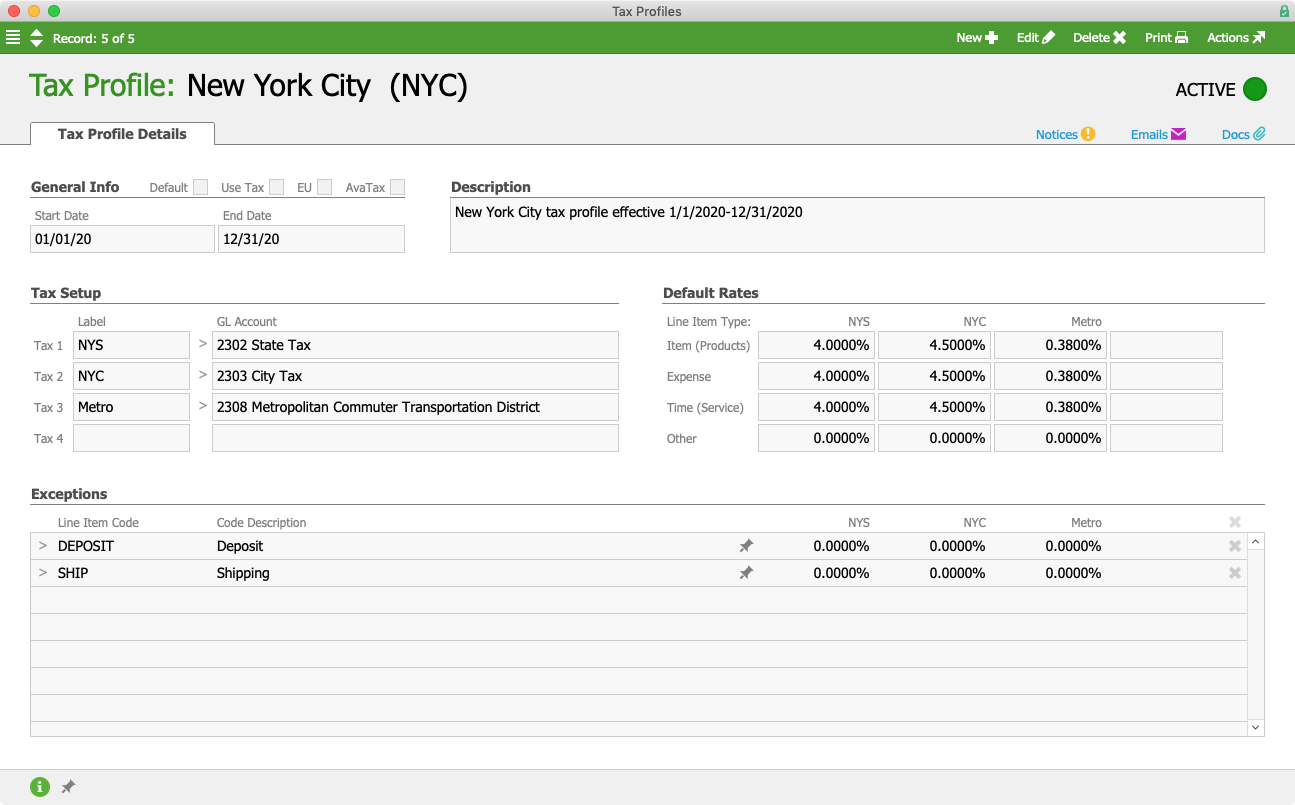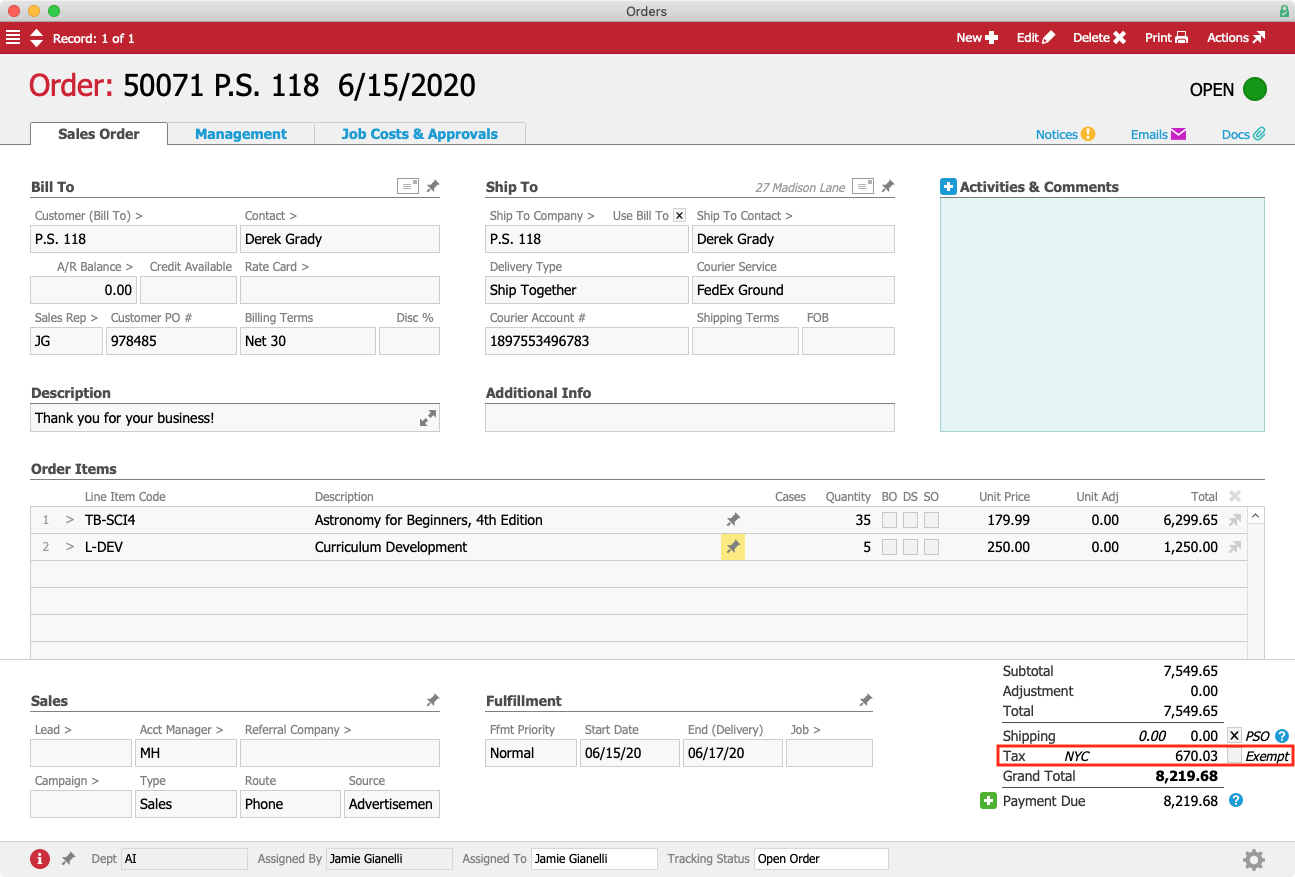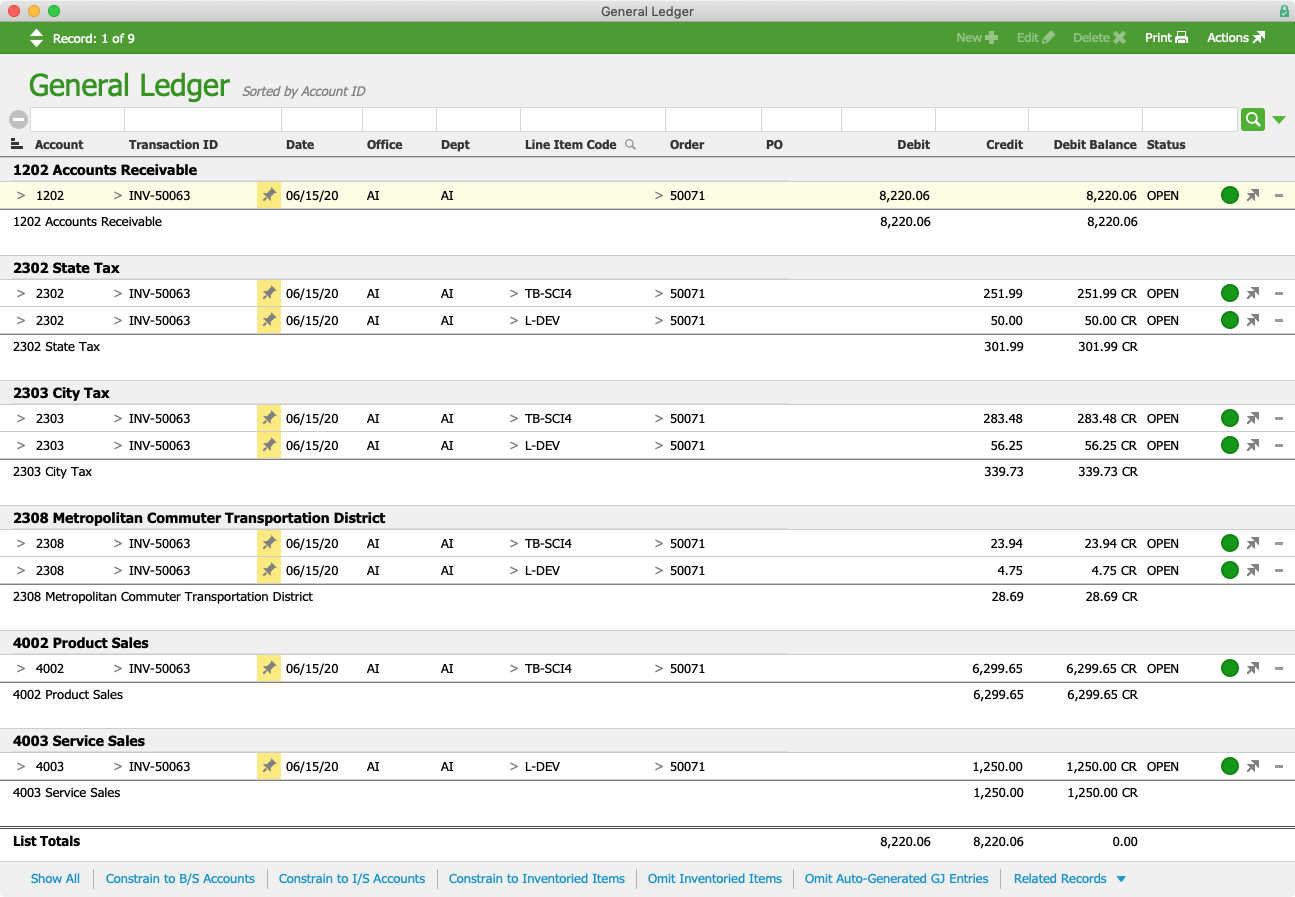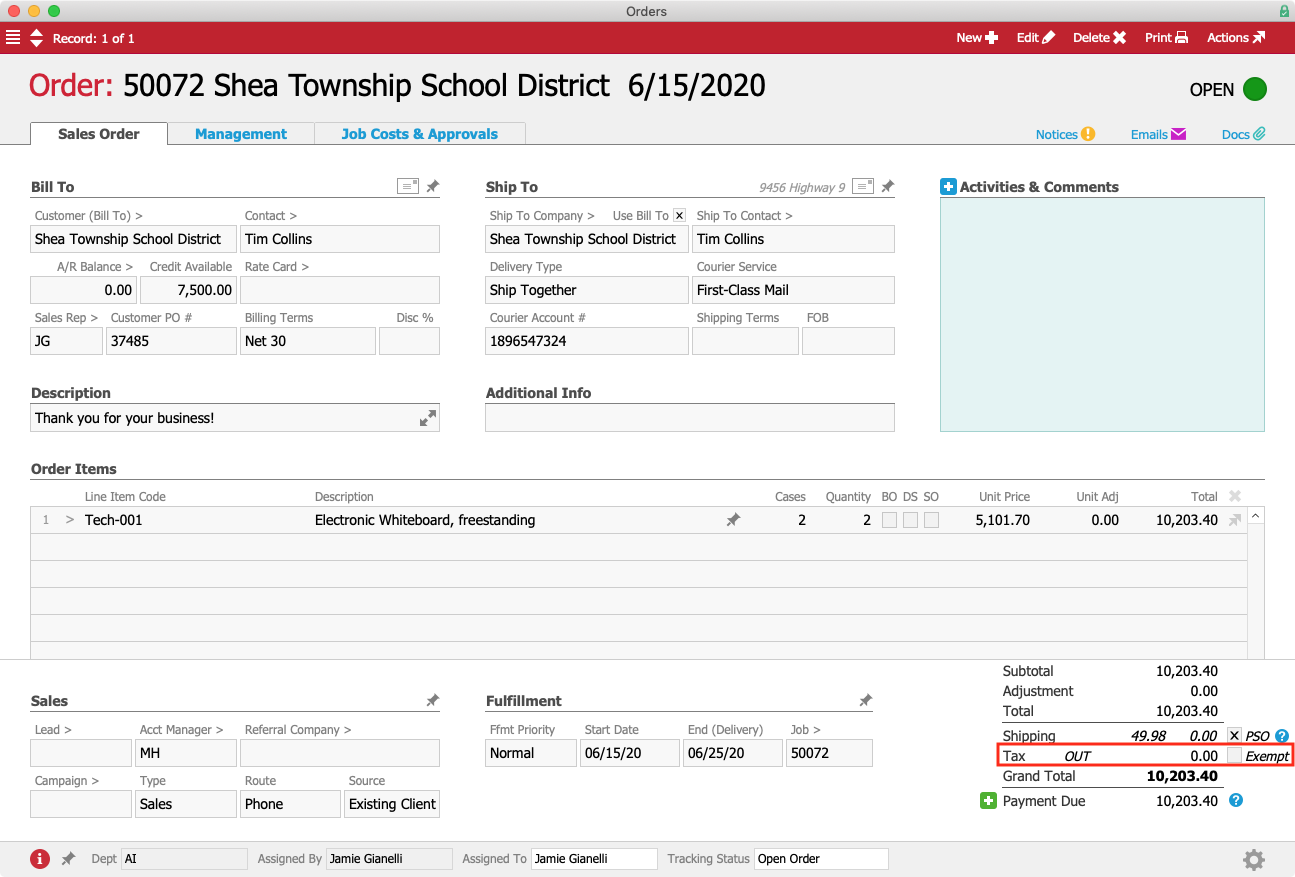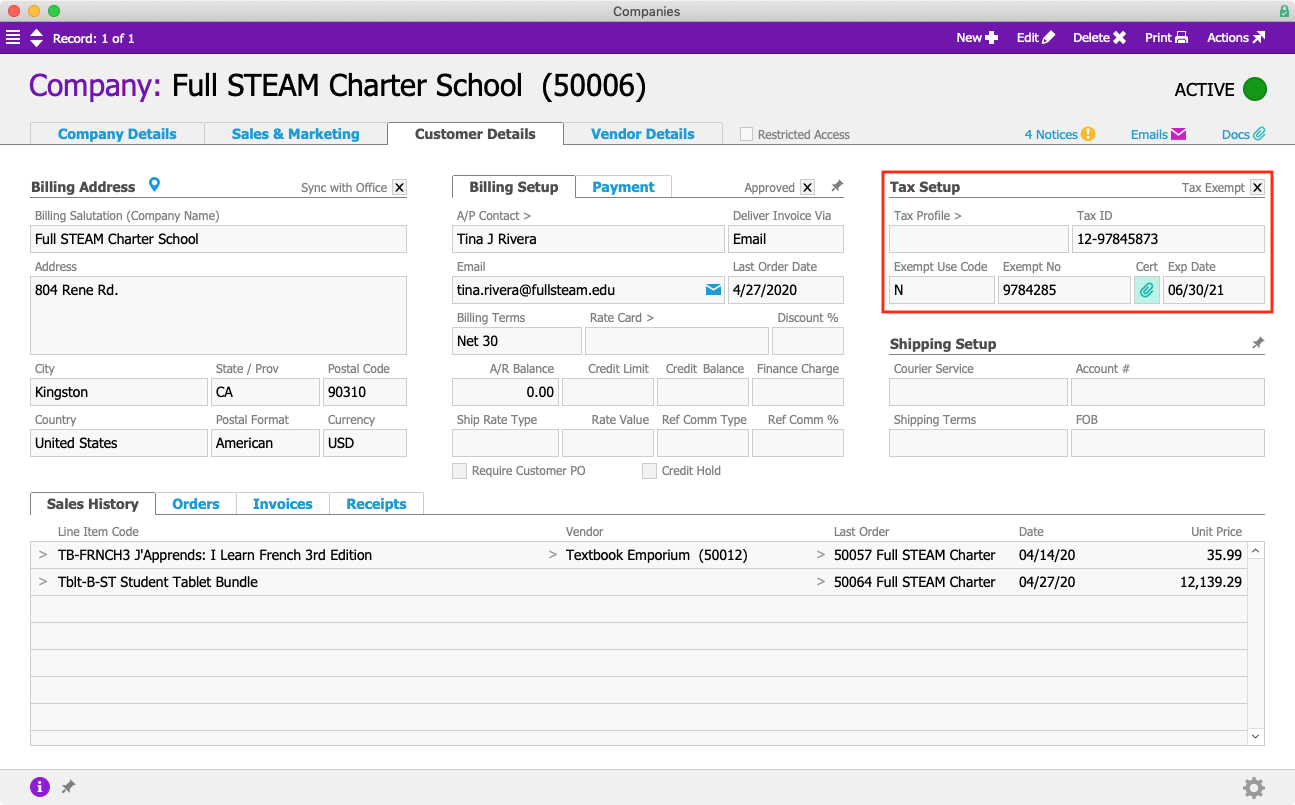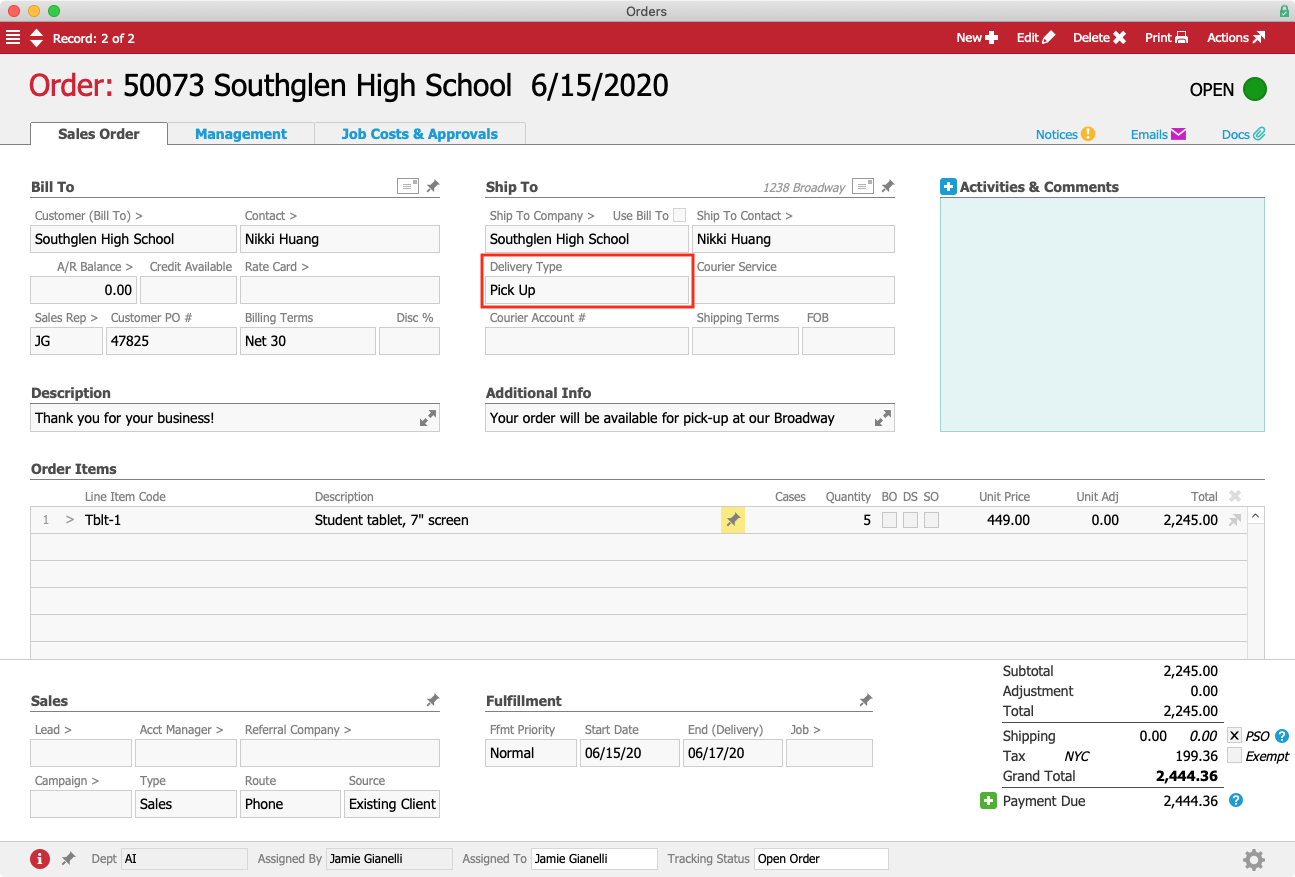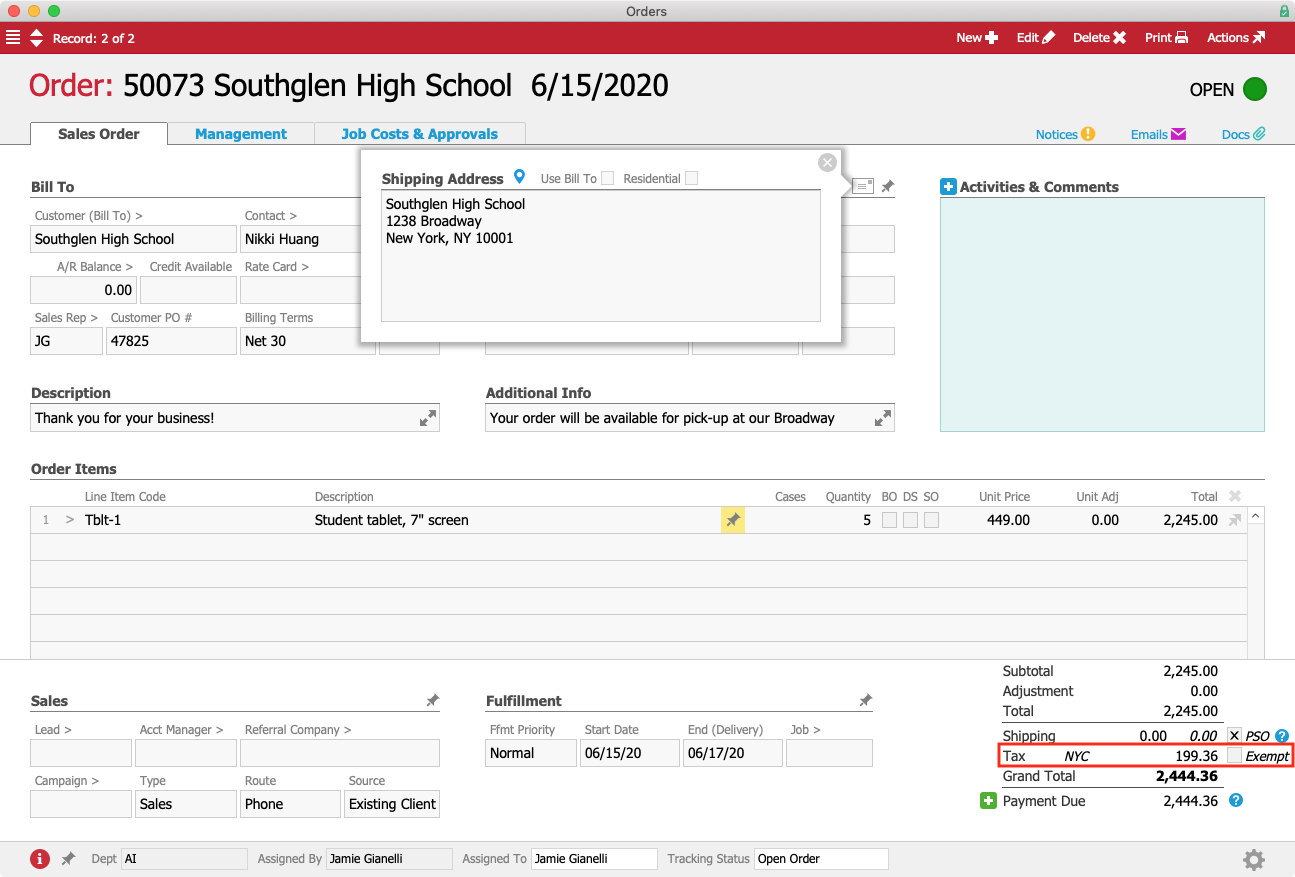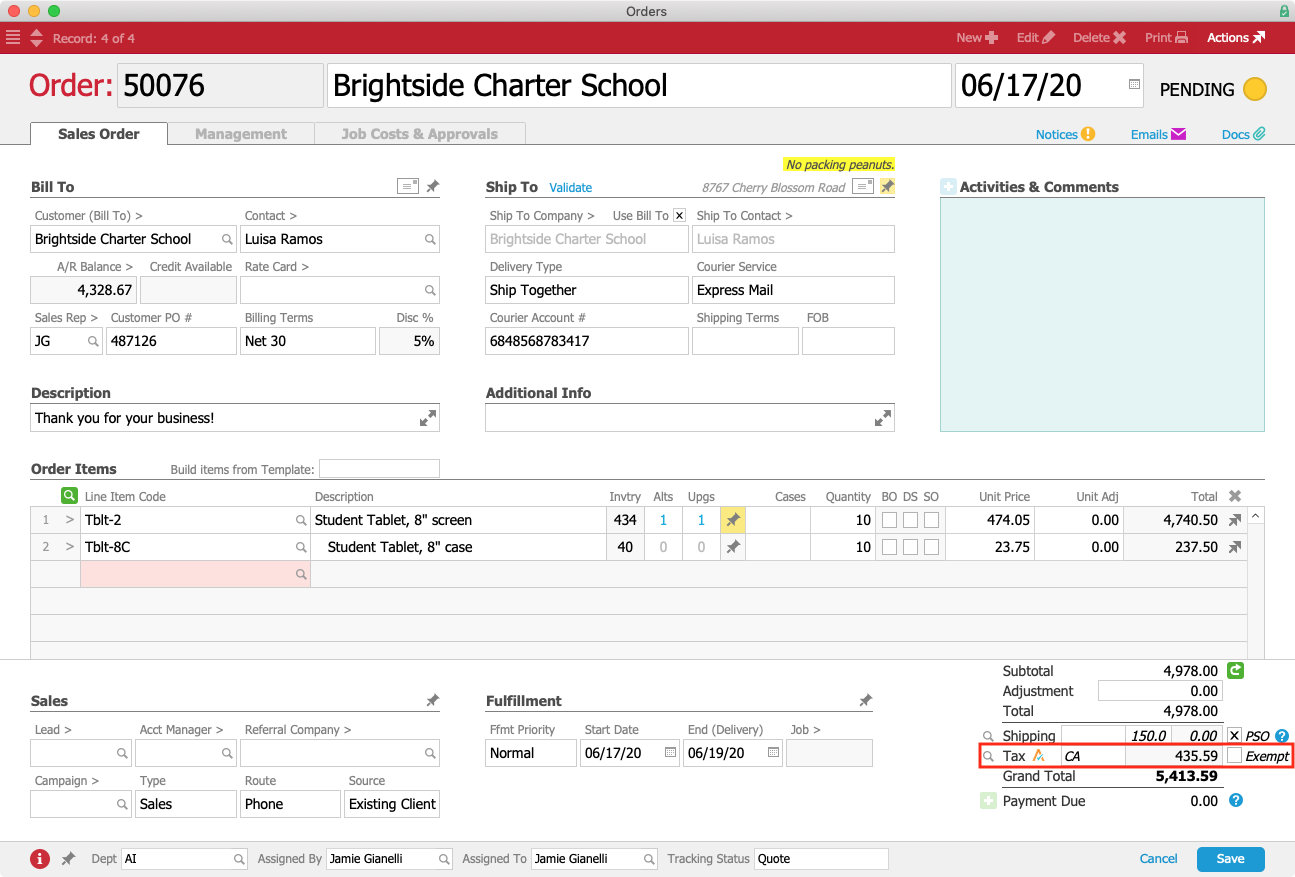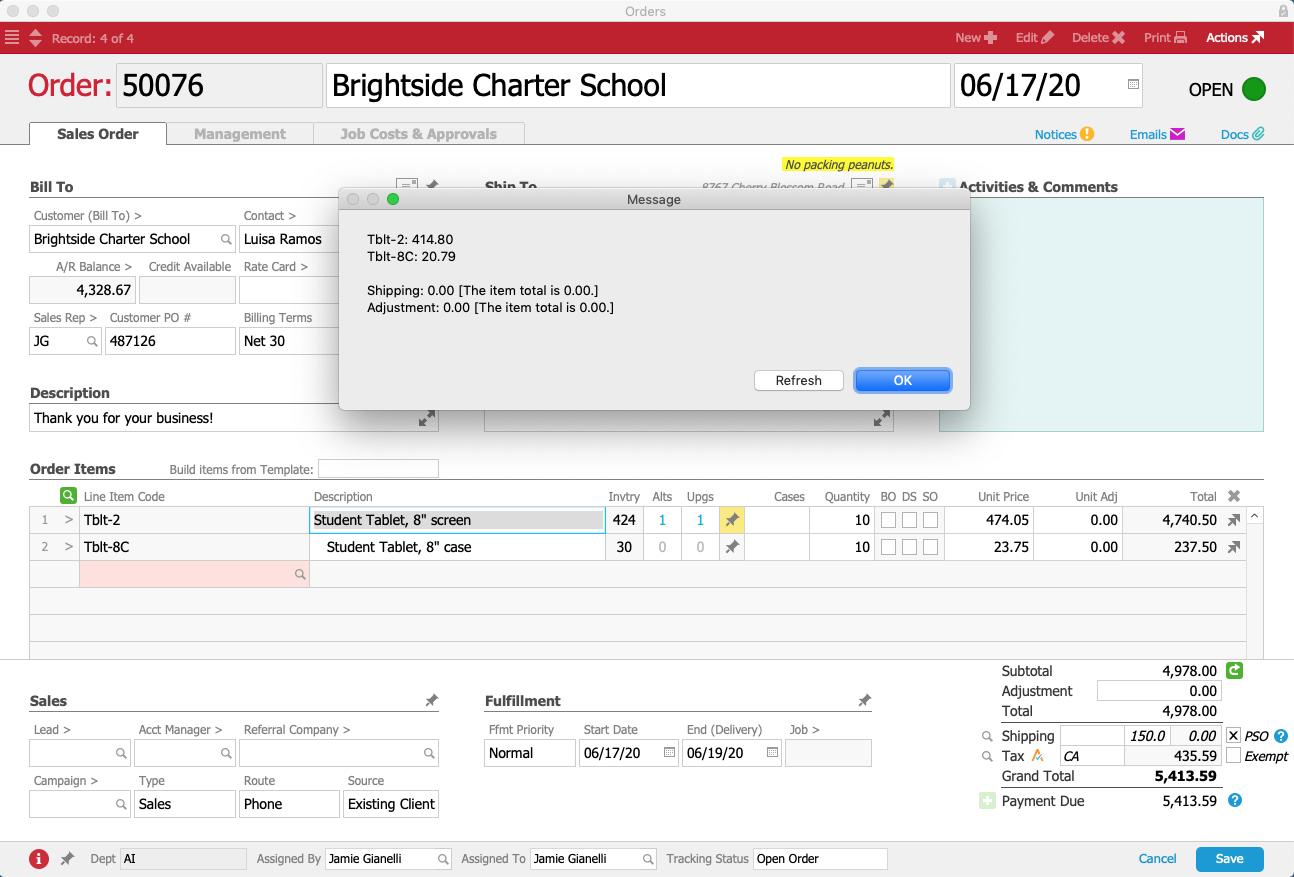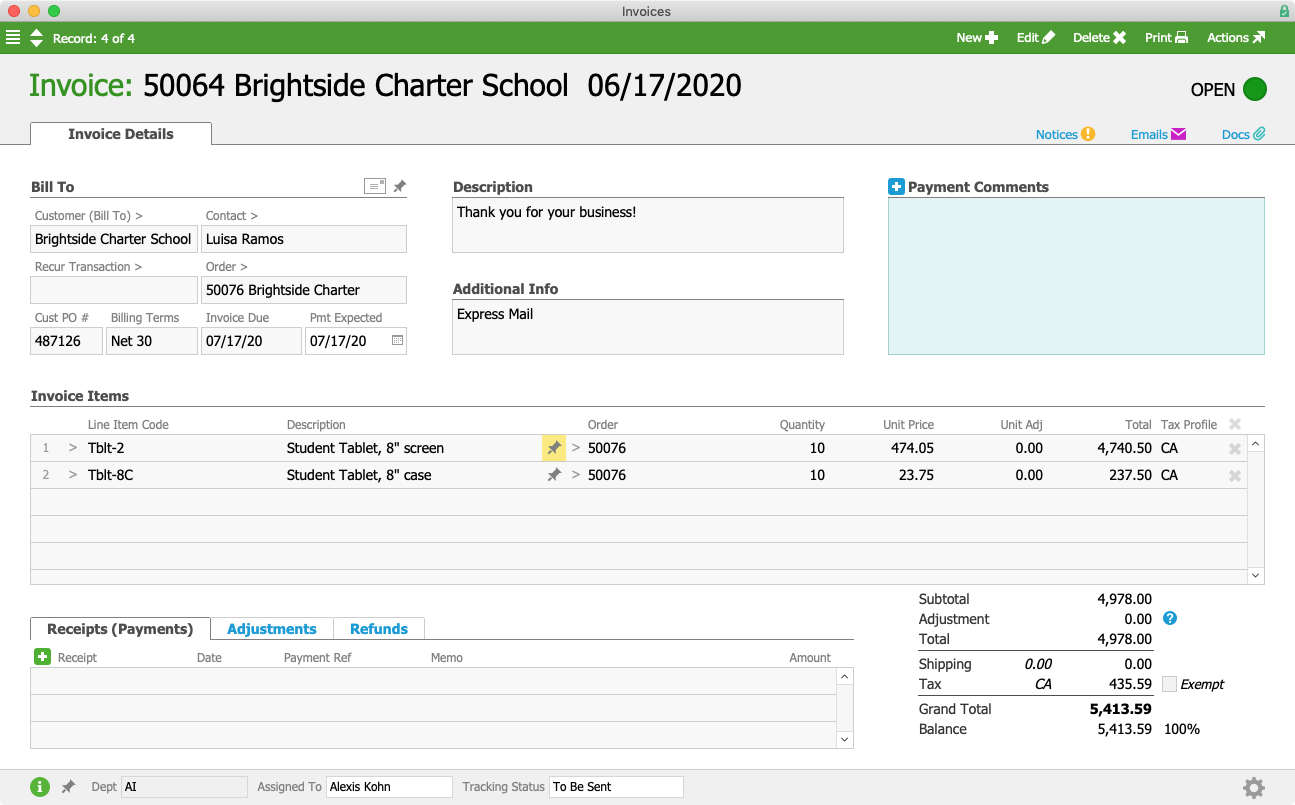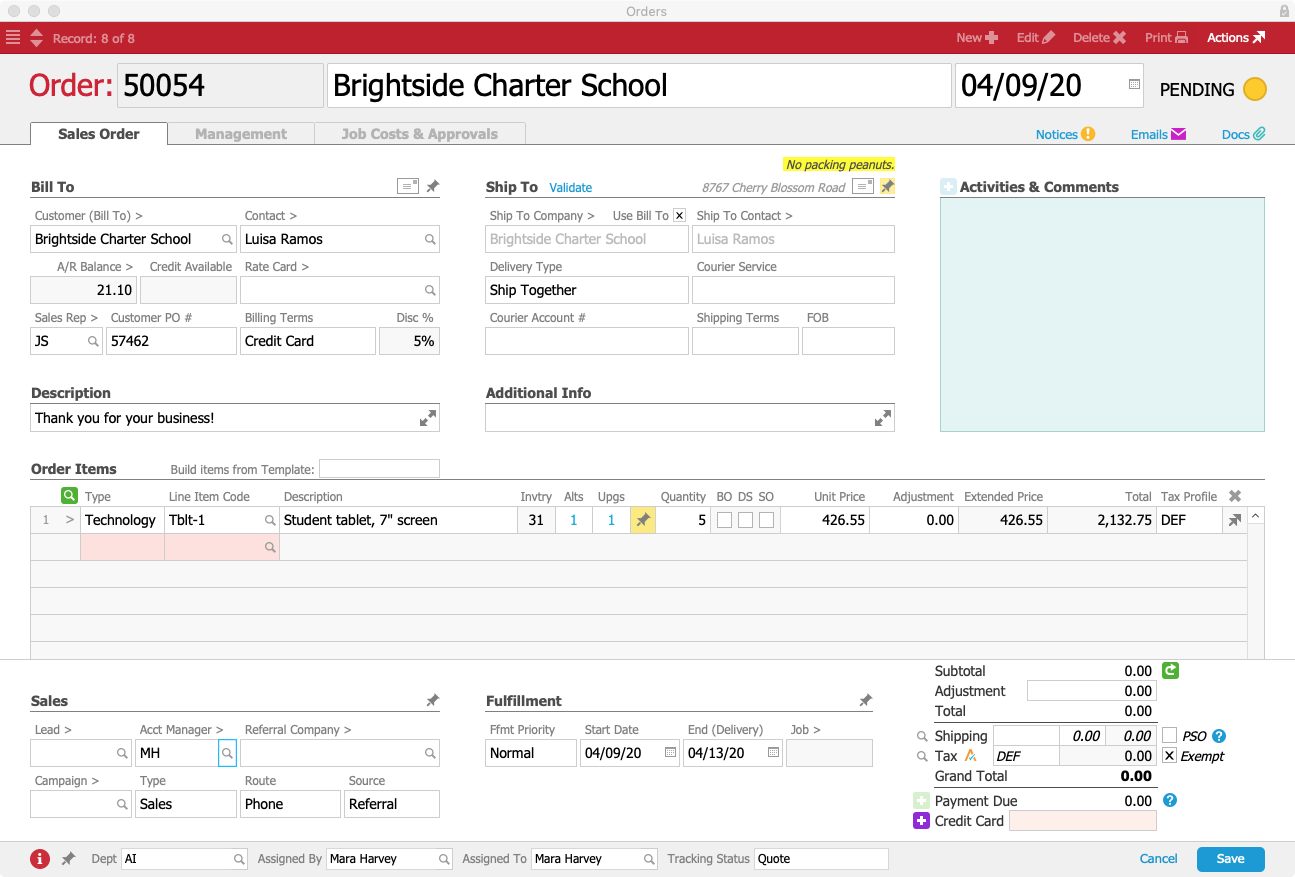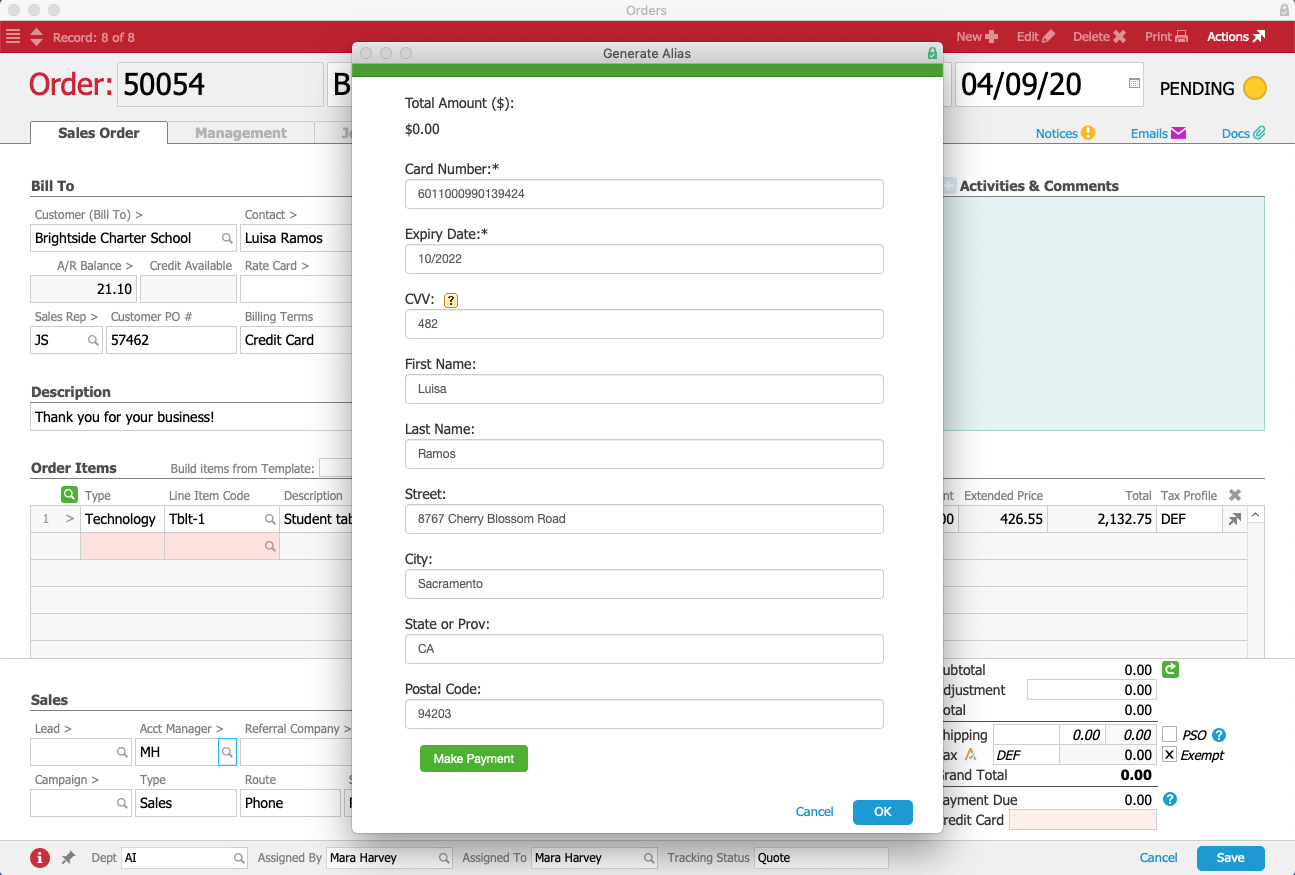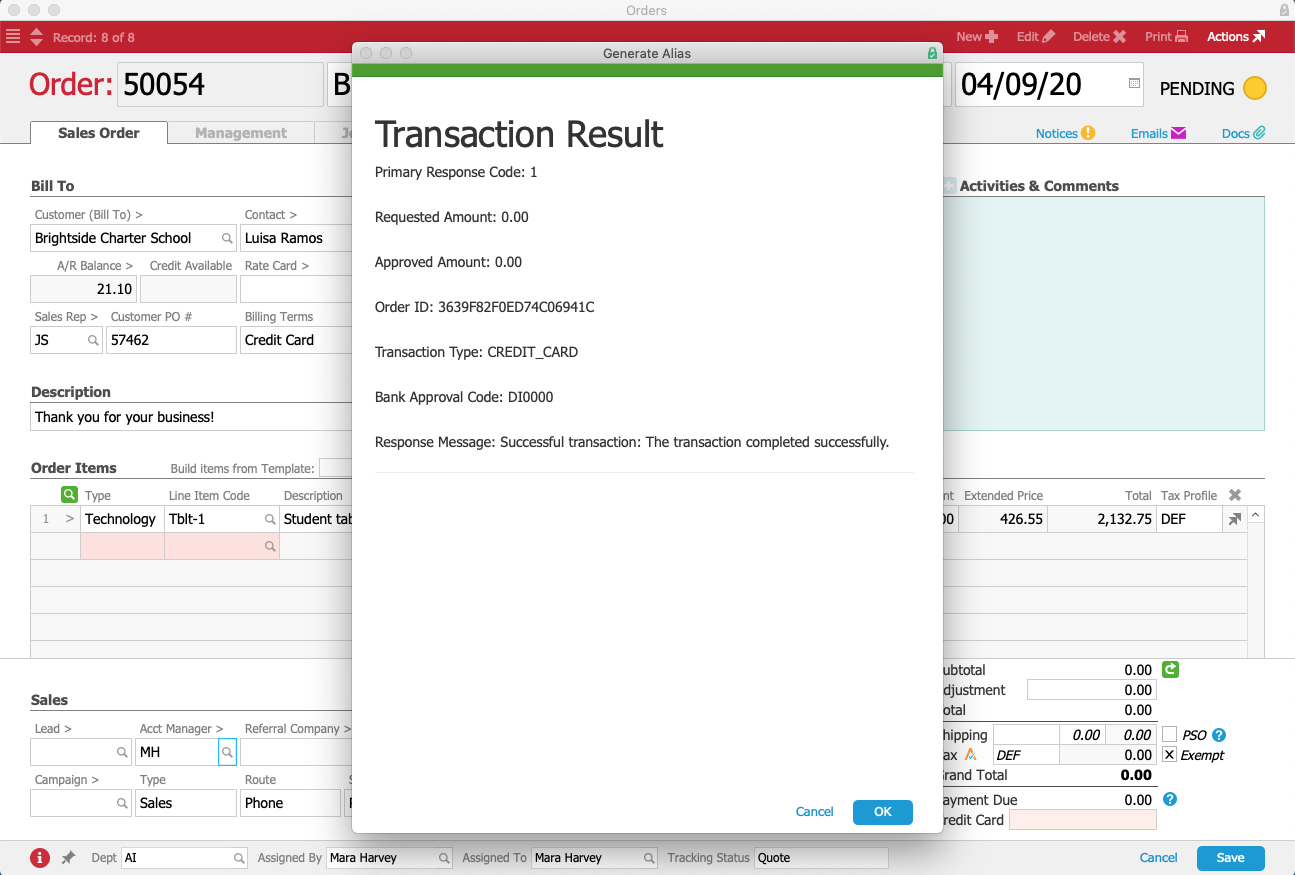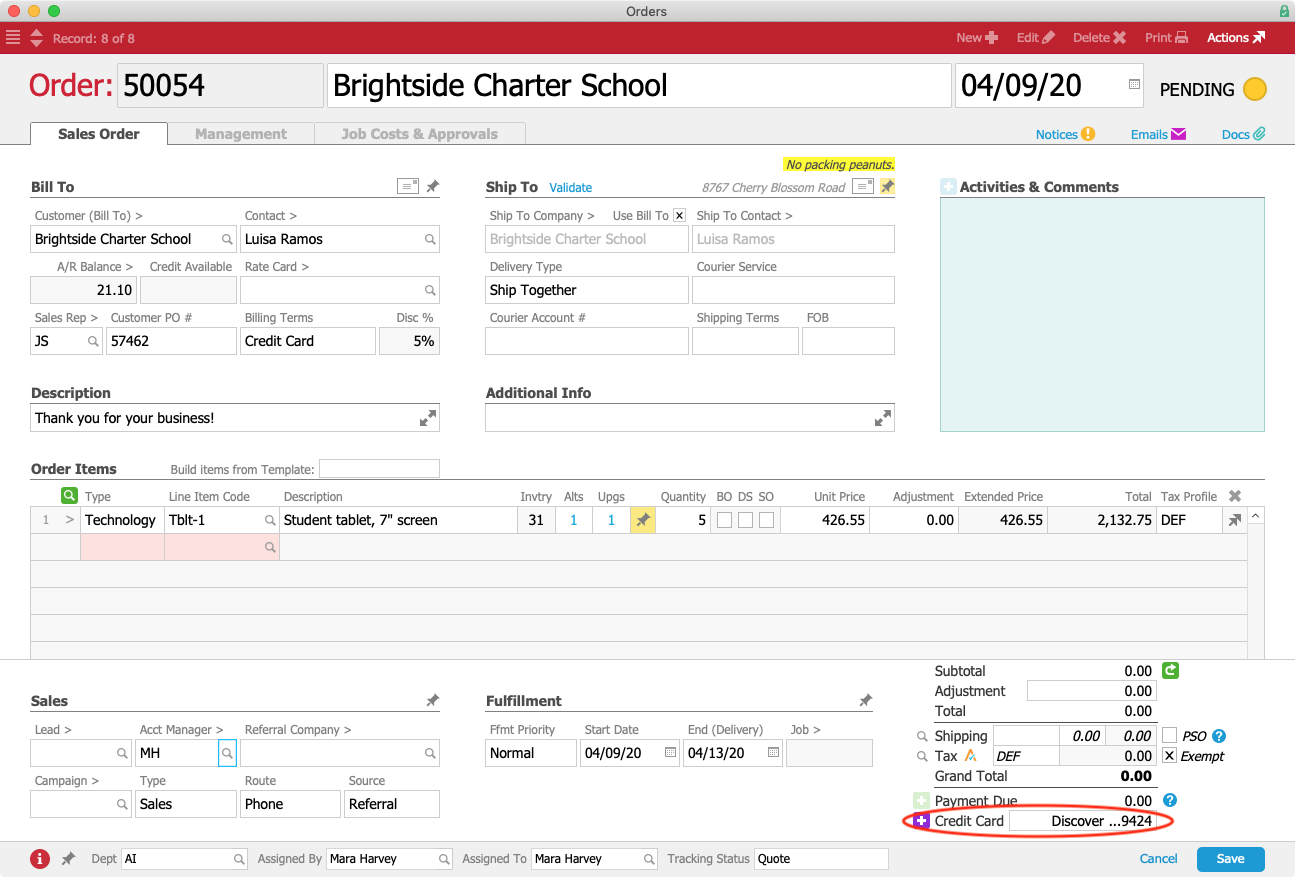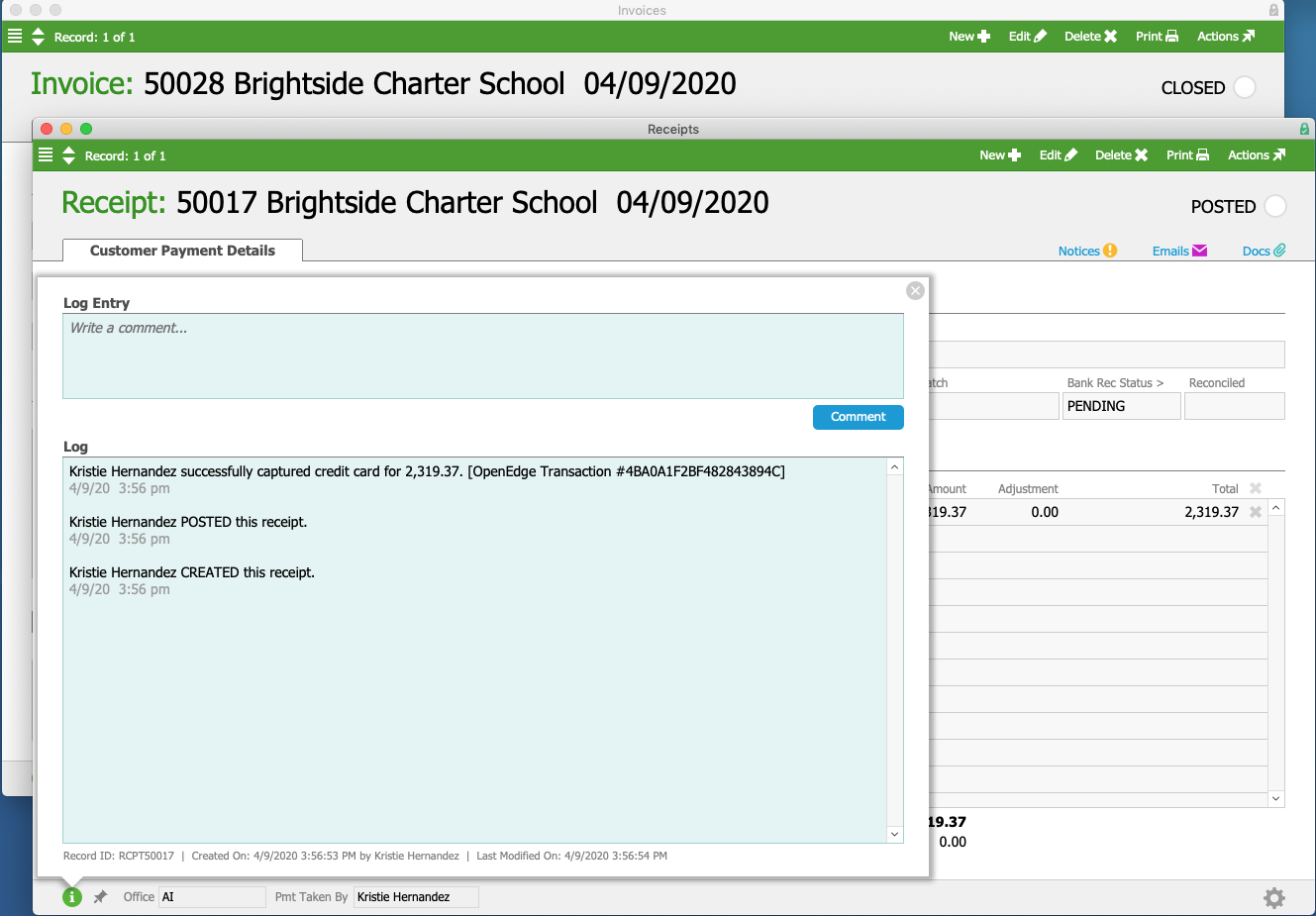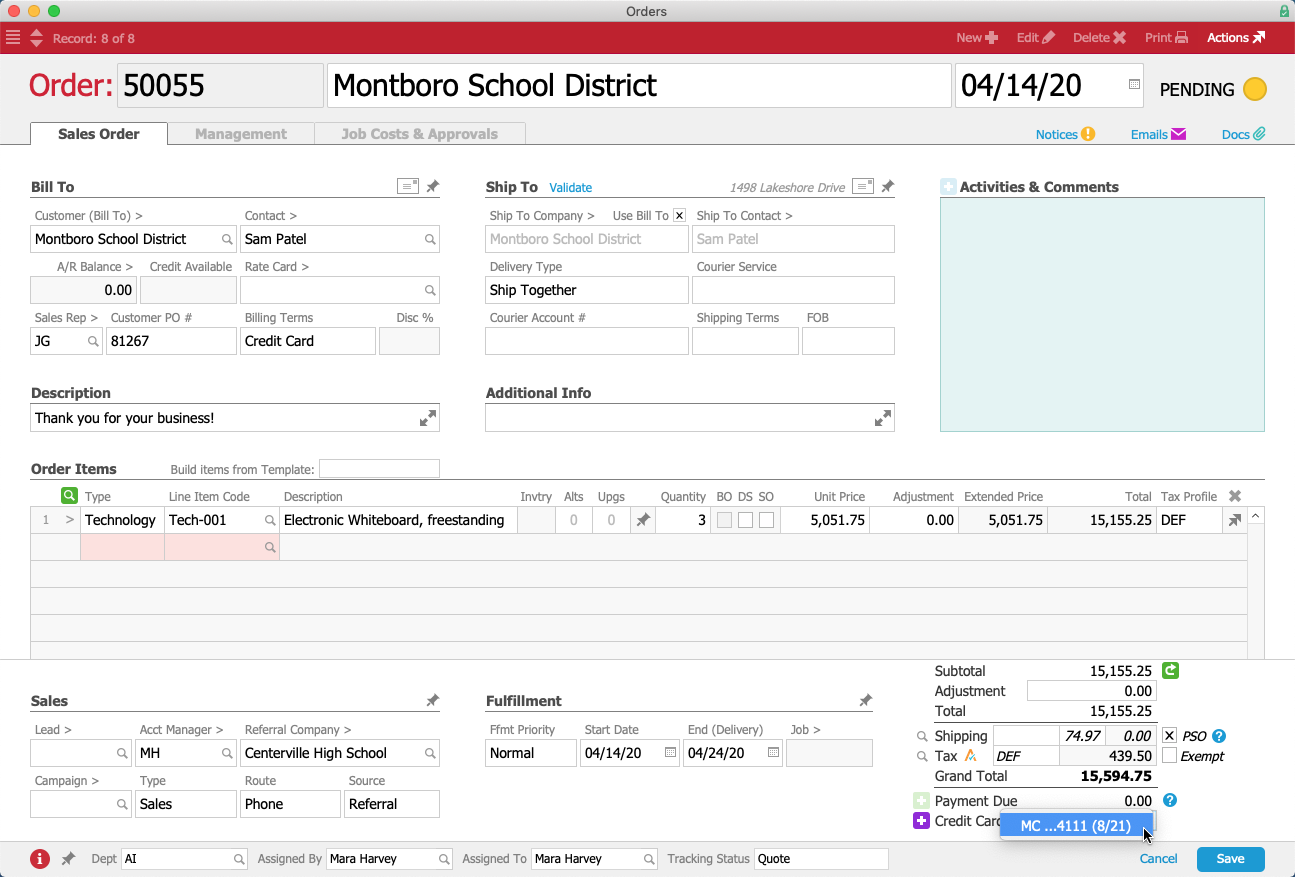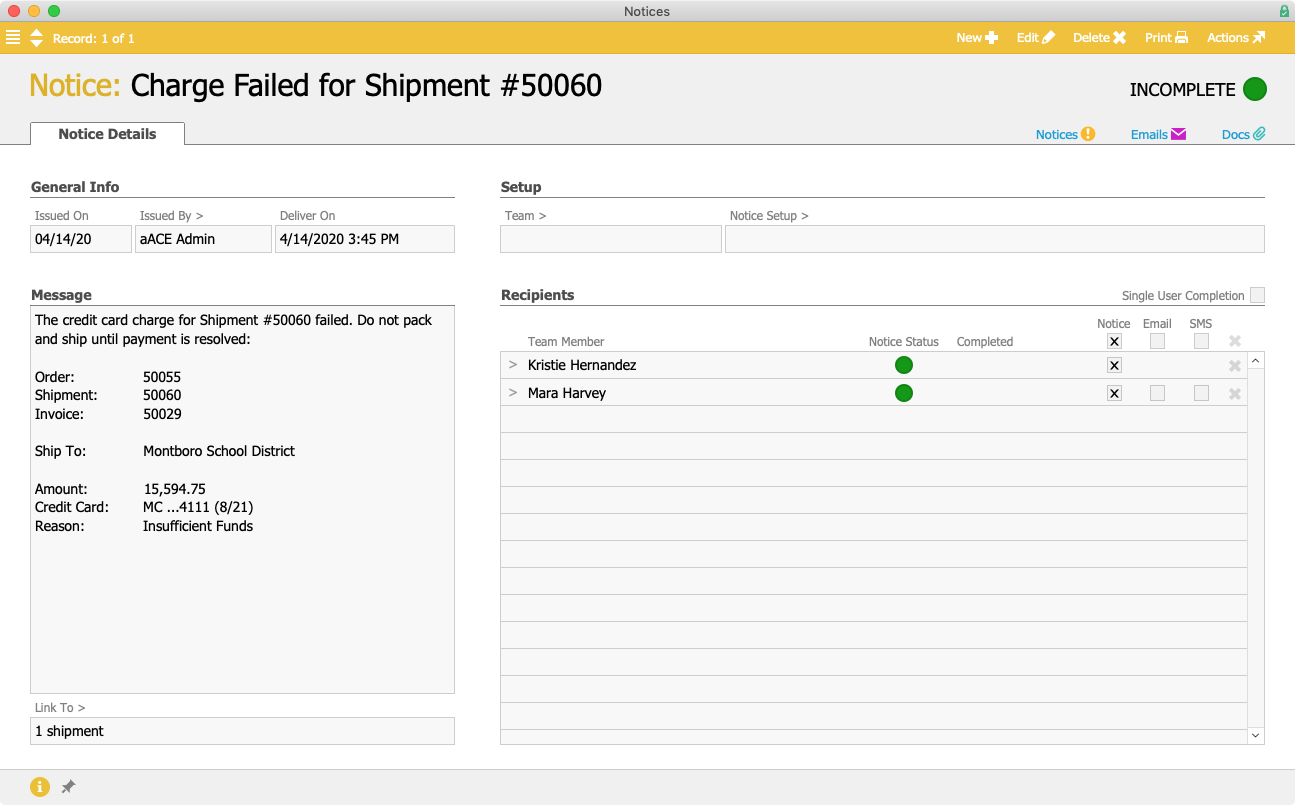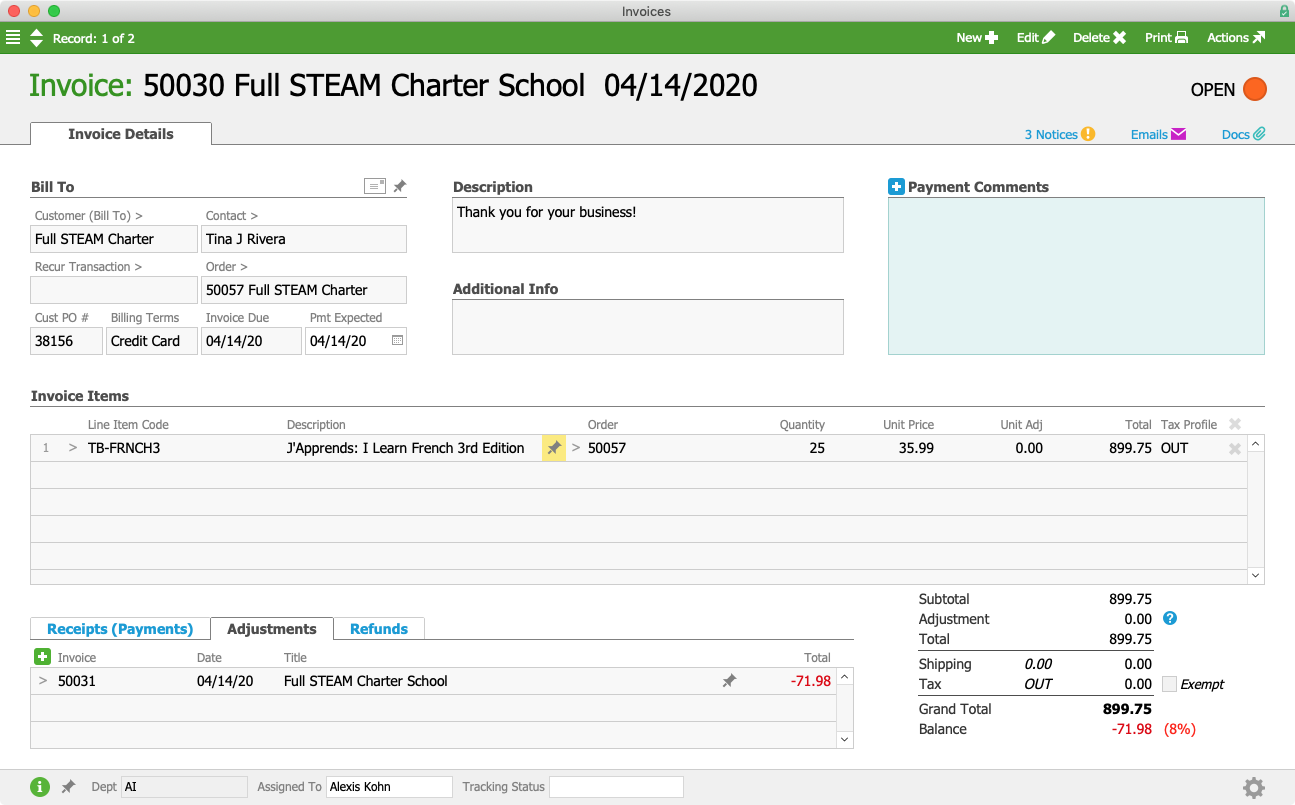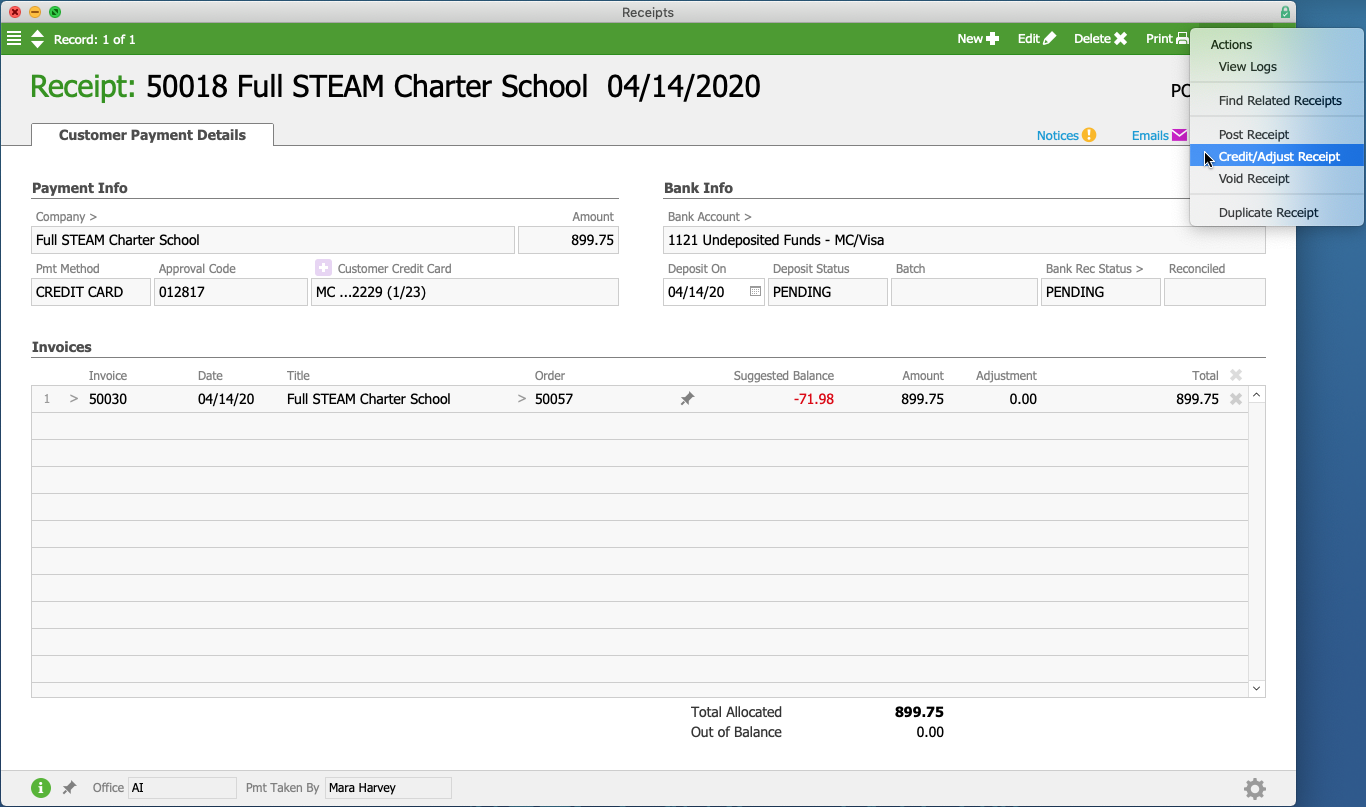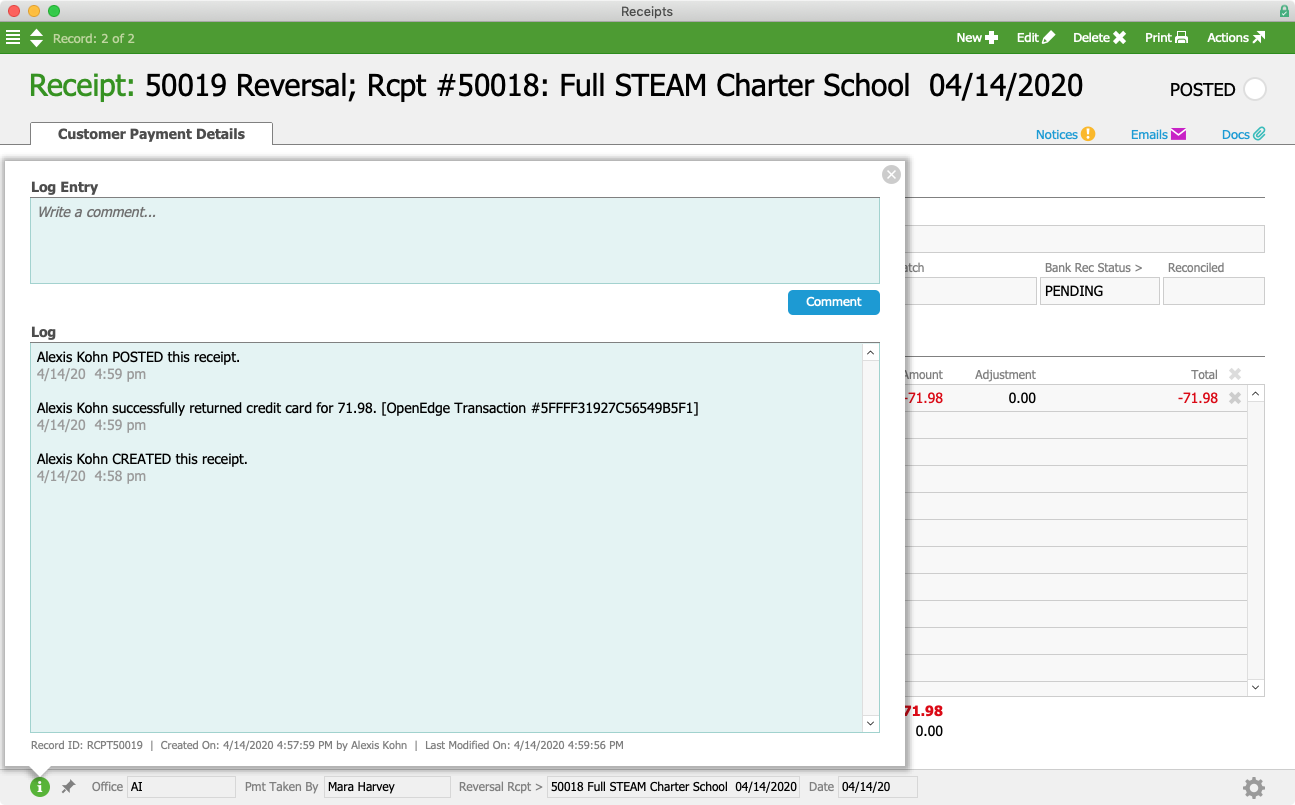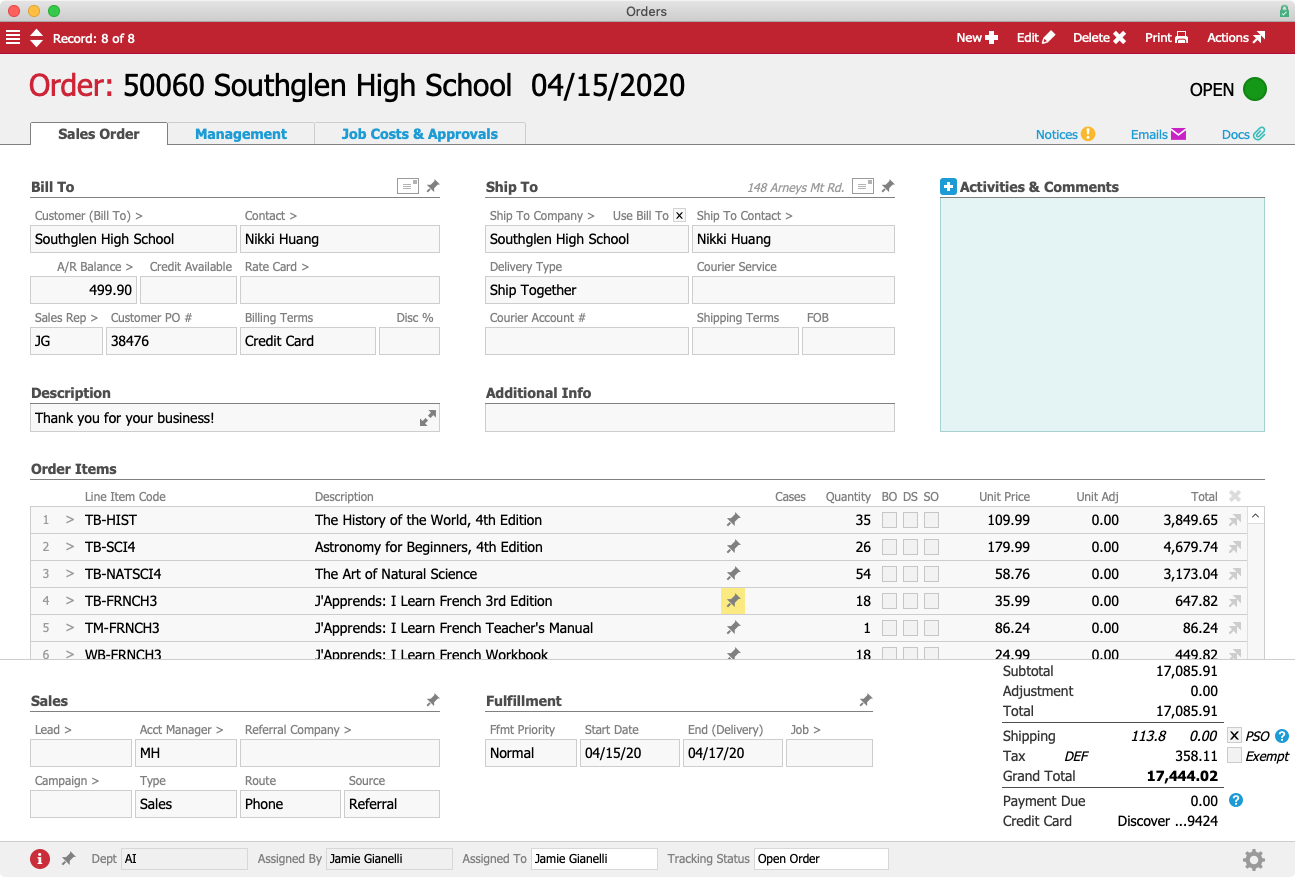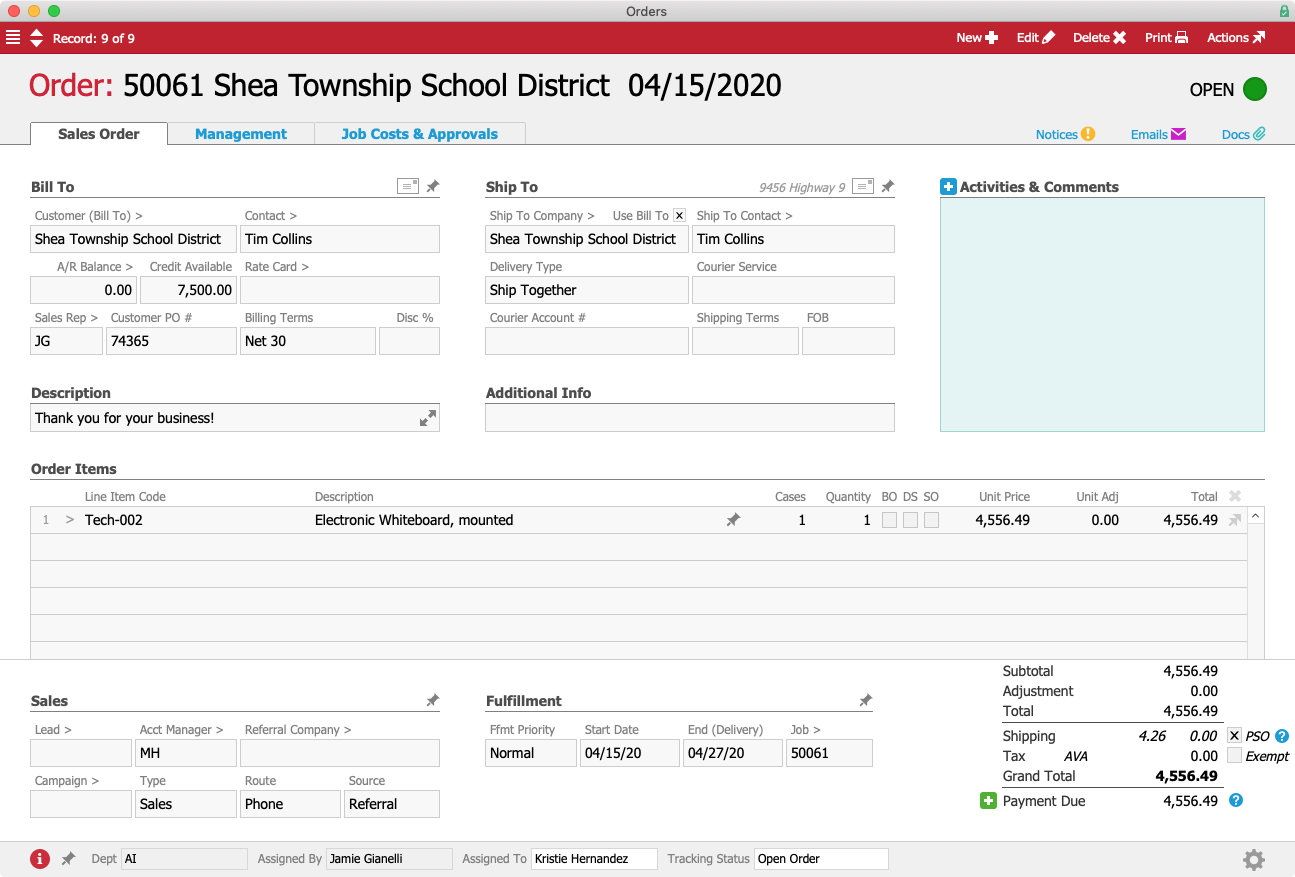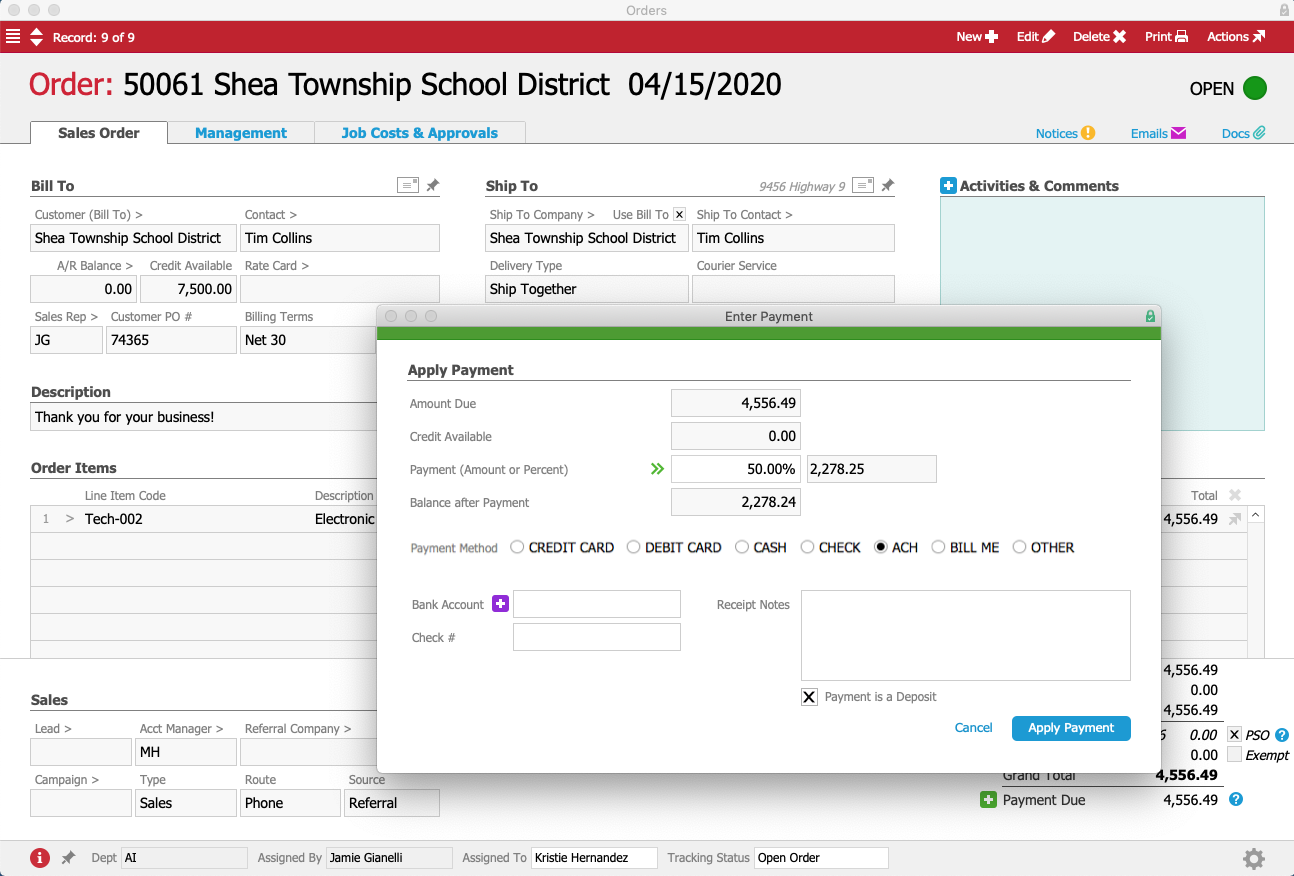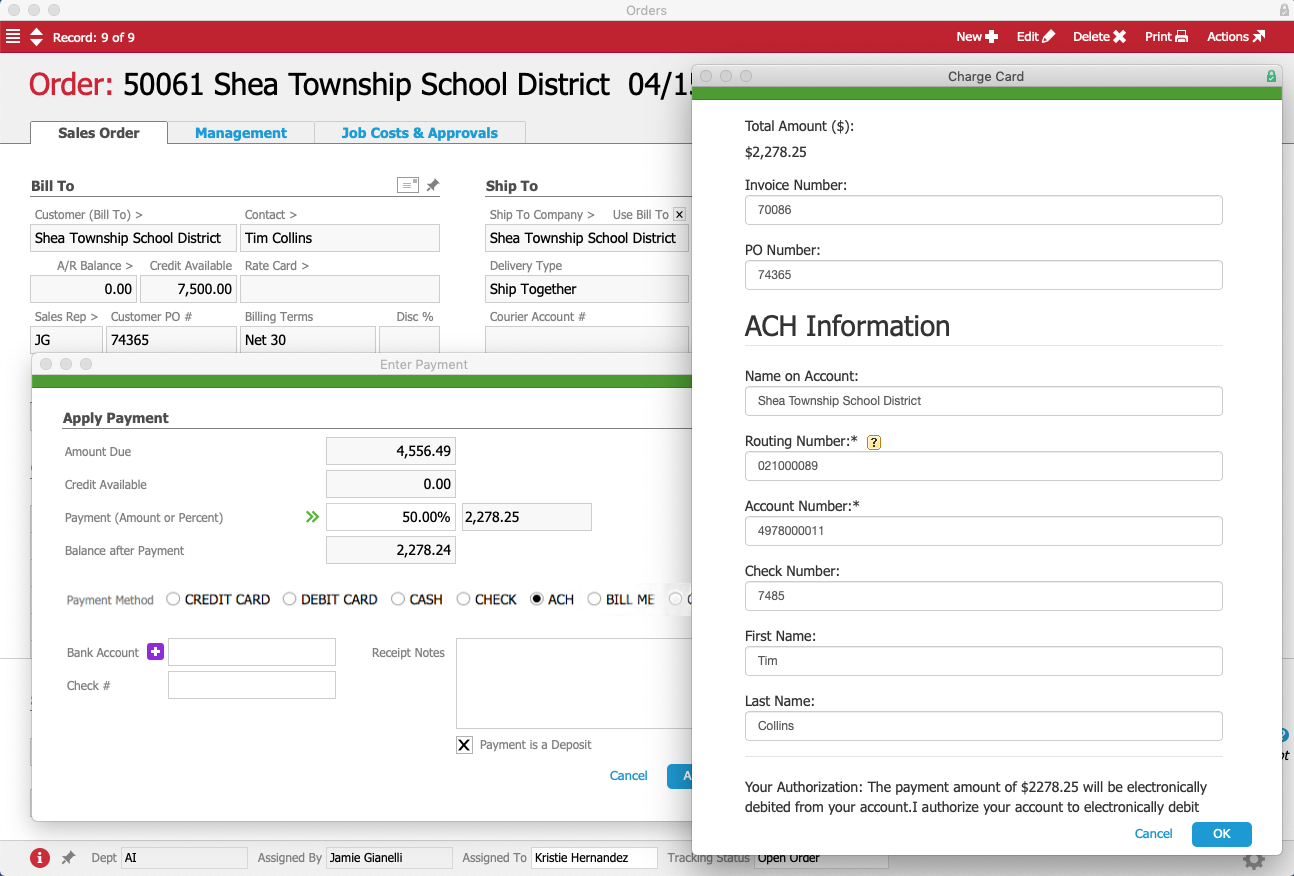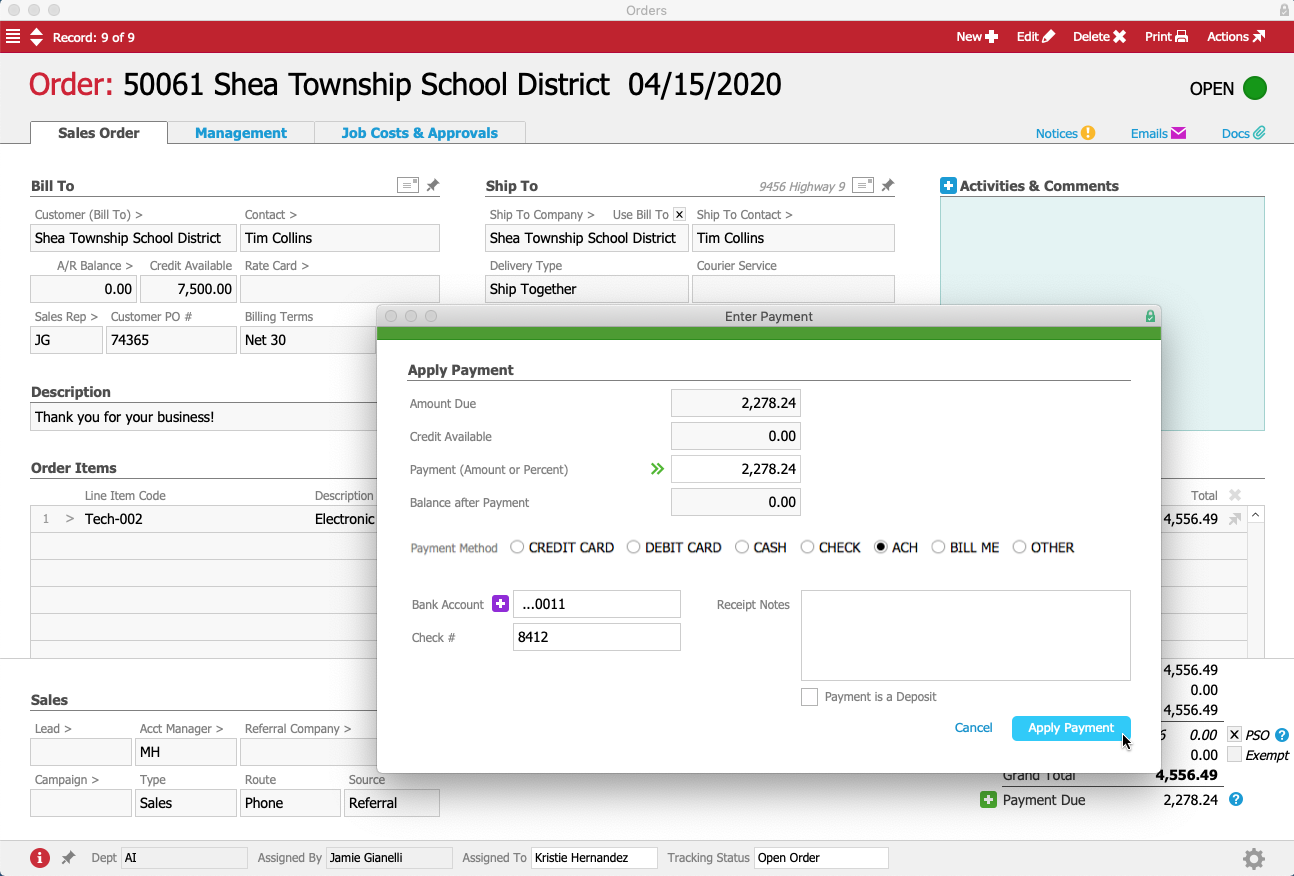7 Tips for Selecting a New Enterprise Software Solution
Investing in enterprise software has traditionally been a time-consuming, resource-depleting, expense-stretching ordeal. But it doesn’t have to be—not with modern business management software (BMS) solutions or enterprise resource planning (ERP) tools.
So how do you overcome the fear of hassle and disruption when it comes to selecting new enterprise software to improve operational efficiencies? Let’s take a look at 7 tips that can help you be better prepared when it comes to selecting a new enterprise software solution.
First, let’s explore what enterprise software is and how BMS and ERPs are related.
What is enterprise software?
Enterprise software helps companies improve efficiencies for core operational functions and includes business management software (BMS) and enterprise resource planning software (ERP).
According to Gartner, enterprise software spending is expected to reach $503 million in 2020 and exceed that at $556 million in 2021. Enterprise software expenditures are a smaller part of the projected overall global IT spend of $3.9 trillion in 2020, an increase of 3.4% from 2019.
In addition to BMS and ERP, here are some other examples of enterprise software solutions:
- Payment processing tools
- Customer Relationship Management (CRM) software
- Accounting software
- Inventory management
- Human resource management systems
- Invoicing and billing systems
- Business intelligence
- Automated workflows
- Order management software
- Business continuity planning software
- Supply chain management software
- Knowledge management systems
- Marketing automation tools
- Project management software
What is business management software (BMS)?
Business management software enables you to efficiently manage your business operations in a single complete, cross-platform software solution. Unlike disparate, task-specific software that often silos your data and makes complete visibility a challenge, BMS solutions pull all your most important data and operational resources into one program, enabling you to quickly see how well your business is performing, where you have gaps, and where you need improvements.
What is enterprise resource planning (ERP) software?
Enterprise resource planning software is a type of enterprise software used for business management. An ERP can help you automate your core operational functions including inventory, supplies, product development, shipping and receiving, product delivery, and other functions such as sales and marketing, accounting, finance and human resources.
Working Together to Improve Operational Efficiencies
Business management software and ERPs improve your overall operational efficiencies. Together, they can help you decrease expenses and improve productivity by automating many of your repetitive manual tasks and providing clarity about how your business is functioning at any point in time.
ERP solutions are proving their value across industries both large and small.
More than half of businesses in a recent survey said investments into ERP and BMS systems are priorities. Why? Well, with ERPs, for example, more than 95% of companies say they have experienced process improvements after implementing an ERP, including more company-wide collaboration, centralized data, and reduced process times.
That’s why it’s not a big surprise that ERP platforms are among the most in-demand enterprise software solutions for small businesses.
But what about traditional challenges that historically attached themselves to executive conversations about selecting, purchasing, and implementing new enterprise software solutions? How do you work through them?
Just like any new purchase, an ill-informed selection could leave you spinning your wheels and burning money. Here are a few tips to help you vet new enterprise software for your organization.
1. Determine goals and objectives
Every new project needs a starting point. While enterprise software can solve a wide range of challenges, your list of goals and objectives should be narrow.
Some questions to consider:
- What problem exists and how do you want to solve it?
- What are your critical operational processes?
- Can any of these critical functions be supplemented or enhanced with a software solution?
- If yes, which specific functions do you want to target?
- What are some of the ways an enterprise software tool could make your processes more efficient?
- Try reverse-engineering your challenges based on product offerings. Does it work?
- What are your anticipated benefits?
- Do you have a list of requirements?
- Have you created a rating or weighing scale for these requirements?
- For your core business processes, do you have challenges or existing problems with accuracy or errors?
- Could a software solution solve these challenges? If yes, how?
- What is the expected return-on-investment for the software?
- What will your ROI metrics be and how will you evaluate them?
- Have you solicited feedback and input from the individuals whose roles will be directly affected by software implementation? Do they have concerns or hesitations?
- Can those issues be addressed before making a purchase and implementing a new product?
- Have you shared your goals and objectives with key stakeholders and organizational executives? Do you have executive buy-in?
- What is your planned timetable and timeline goals?
Enterprise software evaluation, selection, and implementation often require resources and knowledge outside your existing organizational framework. While you can draw on the experience and recommendations of cross-functional teams and stakeholders, you may want to consider working directly with a business management software advisor to help you set goals and objectives, analyze data, and make the best decision to meet your organizational needs.
2. Set an accurate, comprehensive budget
The budget process can be the most tedious and frustrating part of planning for new enterprise software. It’s not uncommon for poorly-planned tech projects to quickly exceed their budget, which can often stall the implementation and adoption processes. However, with careful planning you can set an accurate forecast with incidentals to help you stay on track, even if your project changes over time. It’s good practice to overestimate rather than come up short-handed in the end.
If your project is large-scale, you may want to adopt a phased approach for your budgeting process.
Some questions to consider:
- What is your target budget including software purchase, advisory services, implementation, data transfer, possible downtime, and any other related expenses?
- What issues could you encounter that could increase your potential project costs? What can you do to mitigate those issues?
- Does the program offer everything you need out-of-the-box or will you need funding for add-ons and customizations?
- Will you work with a professional advisor for your software vetting processes or will your internal teams handle this?
- What are the anticipated up-front costs? Implementation expenses? Related licenses and fees? Support costs? Are there other scaling or on-going costs to anticipate in the future?
3. Create a short-list of key vendors
This is where the fun really begins. It’s time to dig, dig, dig into research. Now that you know your goals and objectives, which problems you need to solve, your requirements, and budget, it’s time to create your list of solutions and vendors.
Download our free white paper: Choosing the Right ERP for Your SMB
Take your time. Read reviews. Ask for references. Watch videos and product demos. Then make a short-list of three to five vendors for consideration.
Some questions to consider:
- How long has your company been in business?
- How long has this product been on the market?
- How many clients do you have?
- How often do you release updates or upgrades for your software?
- What happens when you do an update or product upgrade? Is there downtime?
- What’s your customer retention rate?
- Do you have cloud-hosted or on-premises solutions?
- Do you have licensing or user limitations?
- Do you offer web and/or mobile apps?
- What types of training do you offer?
- What are your customer support processes?
- Does your product have integrations with [your organization’s existing software and programs]?
- Is your software developed and supported by an in-house team or is it out-sourced?
- What’s an upcoming feature that has you most excited?
- What is your product’s implementation process and how long does it generally take?
- What is your average turn-around time for help tickets or other support requests?
4. Determine software scalability
All business leaders want their companies, products, and services to grow and flourish. This is a process that may happen quickly or you could experience slower, but steady growth over time.
As your company grows, your needs will change. Can your solution scale with you?
Some questions to consider:
- What happens if I need to add more users to the system?
- Are there limits on specific roles or access privileges?
- Do you have an advisor I can work with directly as my company scales and changes?
- Do you offer ongoing support and training for product upgrades and new features?
- How do you communicate new and changed features to your existing clients?
- How often do you roll out new features for your software?
- Do you solicit feedback from your customers about product issues and suggested changes?
- Will my data be siloed or held captive within your system?
- How do I share data within your software to my other critical operational systems and applications?
5. Evaluate risks and weigh risks against benefits
When it comes to new technology solutions, third-party issues could put your organization at risk for financial burdens — such as fines or penalties for improper compliance to workflow and supply chain disruptions that stall or thwart your organization’s abilities to meet operational goals.
Some questions to consider:
- Have you conducted a vendor risk assessment?
- What is the critical operational function this software will address?
- What would happen if you face a disruption or other issue with this solution provider? How would it affect your ability to continue operations as normal?
- Does your solution meet your basic compliance and regulatory requirements?
- What cybersecurity processes and protections does this vendor have in place?
- Do they have business continuity or disaster recovery plans to deal with cyber attacks, data breaches, or other disruptions?
- Have you conducted risk assessments for related second- and third-tier vendors?
- Is there another software provider who may provide similar services at less risk?
- If not, are you comfortable mitigating those risks?
6. Trials and evaluations
We all know how great some marketers are and it can be easy to be drawn in on hype for a new product or service, especially in IT.
But how do you know if the product you’re considering will meet your organizational needs before you invest all your time and money on something that looks great, but fails to perform?
First, request a custom demo and be sure the product advisor tells you how the product can — and will — solve your organizational challenges. Have your own list of challenges and be prepared to ask the advisor to explain how the product can tackle those issues. Don’t be hesitant to walk away from a company that can’t answer those questions in a reasonable timeframe.
Some questions to consider:
- Does the company offer a free trial, evaluation period, or other product guarantee?
- Does the company offer adequate training and resources?
- Will the company share use cases and customer testimonials with you?
- Does the company offer references so you can talk with others who use the product?
- What do other customers say about technical support?
- Are there known bugs or issues?
- How often does the company do product updates?
- Is the company scaling itself?
- If the company offers a free trial or evaluation, can you transfer data and information from your trial/initial setup process into your full working software version?
7. Select your new software solution and begin implementation
Your enterprise software buyer’s journey began with a problem that needed a solution. Once you’ve completed the first six recommendations, it’s time to select your new software and begin the implementation, adoption, and usage phase. Are you ready?
Some questions to consider:
- Is this solution cloud-hosted or on-premises?
- How complex is the installation and set-up process?
- How much time does your provider need to get the system operational for you?
- Have you identified the key team members who will use the software?
- Have you identified the key processes and roles the software will supplement?
- Have you determined a training schedule and do you have adequate training resources at your disposal?
- Do you anticipate implementation or adoption roadblock? If yes, what do they look like and what are some steps you can take to overcome them?
Decision-making
Choosing a new software vendor doesn’t have to be as scary and frustrating as it used to be. With foresight, planning, testing, and evaluation, you can be confident you’re moving forward with a solution that can meet your budget and achieve the operational efficiencies you want for your organization.
Need help finding the right enterprise software solution for you? Join us for a free upcoming webinar to see aACE software in action and learn more about how it can help you do business better.
"[The aACEsoft] team has provided a system and support that has really allowed us to do more than we expected to be able to in switching to a new software. It unified functions within our company that previously had little to no communication with each other." - Theodore Fotopulous, Operations Manager, Raydoor Inc.





